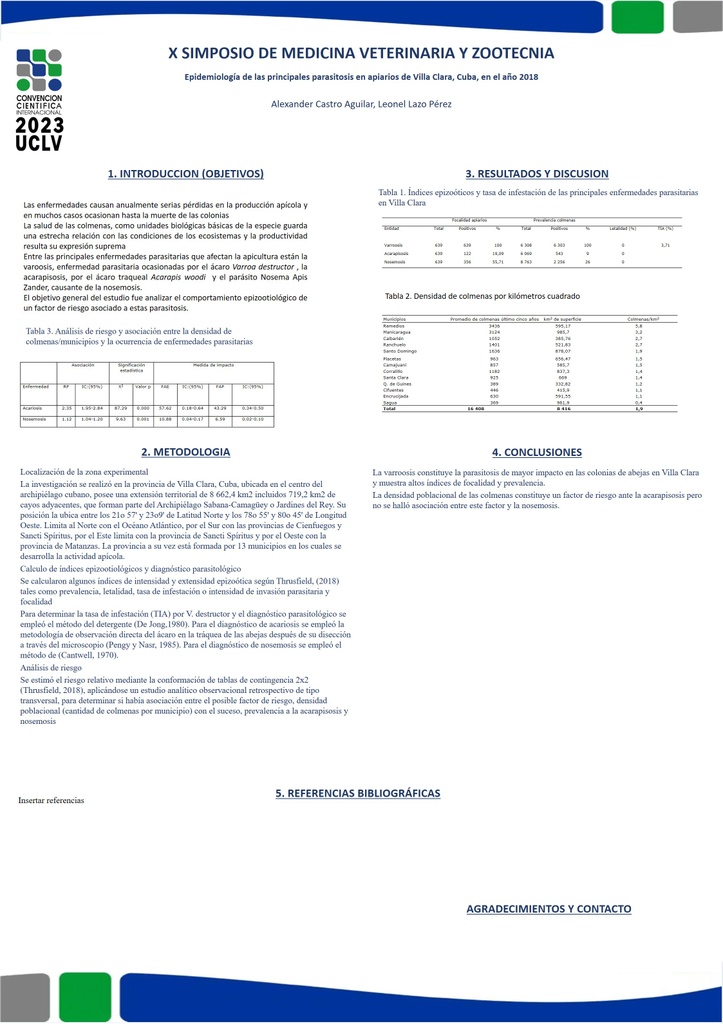Executive Secretary

9th International Scientific Conference on Agricultural Development and Sustainability
10th Symposium of Veterinary Medicine and Zootechnics

Abstract
The appearance of outbreaks of emerging or re-emerging diseases in animals on a global scale has led the international community to recognize the importance of strengthening prevention, early warning, timely diagnosis and rapid response. The general objective of the study was to analyze the epizootiological behavior of the main parasitosis that affected the apiaries in the province of Villa Clara, Cuba in 2018 and to determine if the density of the hives constitutes a risk factor associated with these parasitosis. Some indices of epizootic intensity and extent were calculated. An information platform was designed based on a Geographic Information System that facilitated the visualization of the densely populated areas of beehives and the relative risk (RR) was estimated, applying a retrospective observational analytical study of a cross-sectional type to determine the reason for the prevalence of diseases parasites before the density of hives per km2. Varroosis is the disease that most affects bee populations in Villa Clara and shows high rates of focality and prevalence. The population density of the hives constitutes a risk factor for acarapisosis, but no association was found between this factor and nosemosis.
Resumen
La aparición de brotes de enfermedades emergentes o reemergentes en los animales a escala global, ha dado lugar a que la comunidad internacional reconozca la importancia de fortalecer la prevención, la alerta precoz, el diagnóstico oportuno y la respuesta rápida. El objetivo general del estudio fue analizar el comportamiento epizootiológico de las principales parasitosis que afectaron los apiarios en la provincia de Villa Clara, Cuba en el año 2018 y determinar si la densidad de las colmenas constituye un factor de riesgo asociado a estas parasitosis. Se calcularon algunos índices de intensidad y extensidad epizoótica. Fue diseñada una plataforma informativa a partir de un Sistema de Información Geografico que facilitó la visualización de las áreas densamente pobladas de colmenas y se estimó el riesgo relativo (RR) aplicándose un estudio analítico observacional retrospectivo de tipo transversal para determinar la razón de prevalencia de enfermedades parasitarias ante la densidad de colmenas por km2. La varroosis es la enfermedad que más afecta las poblaciones apícolas en Villa Clara y muestra altos índices de focalidad y prevalencia. La densidad poblacional de las colmenas constituye un factor de riesgo ante la acarapisosis pero no se halló asociación entre este factor y la nosemosis.
About The Speaker

Leonel Lazo Pérez

Discussion

